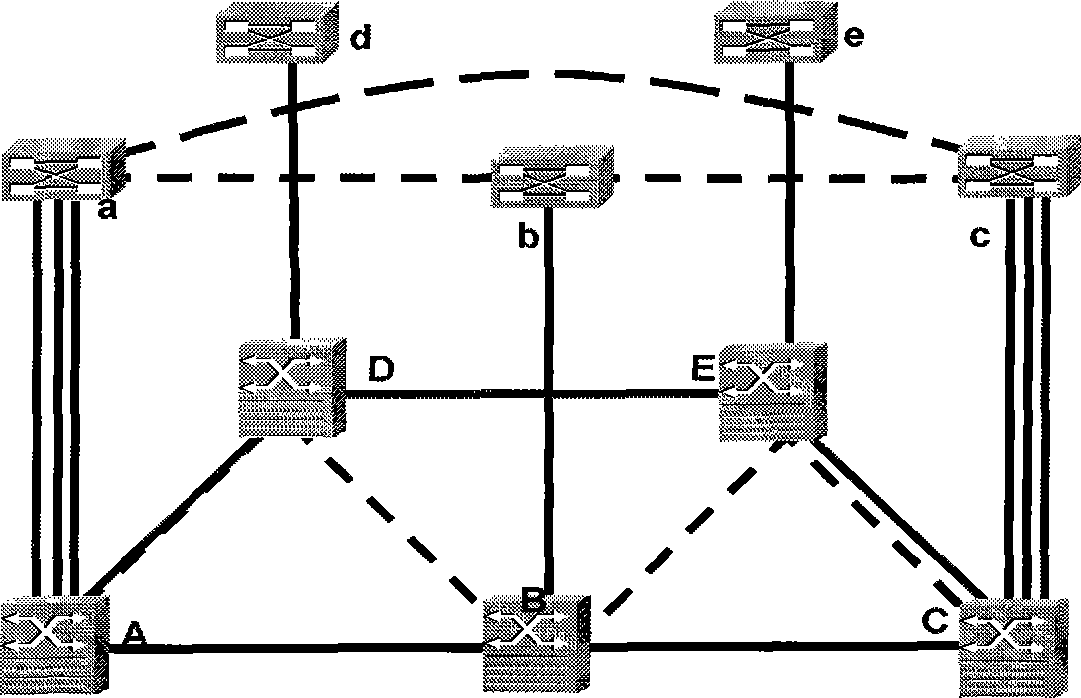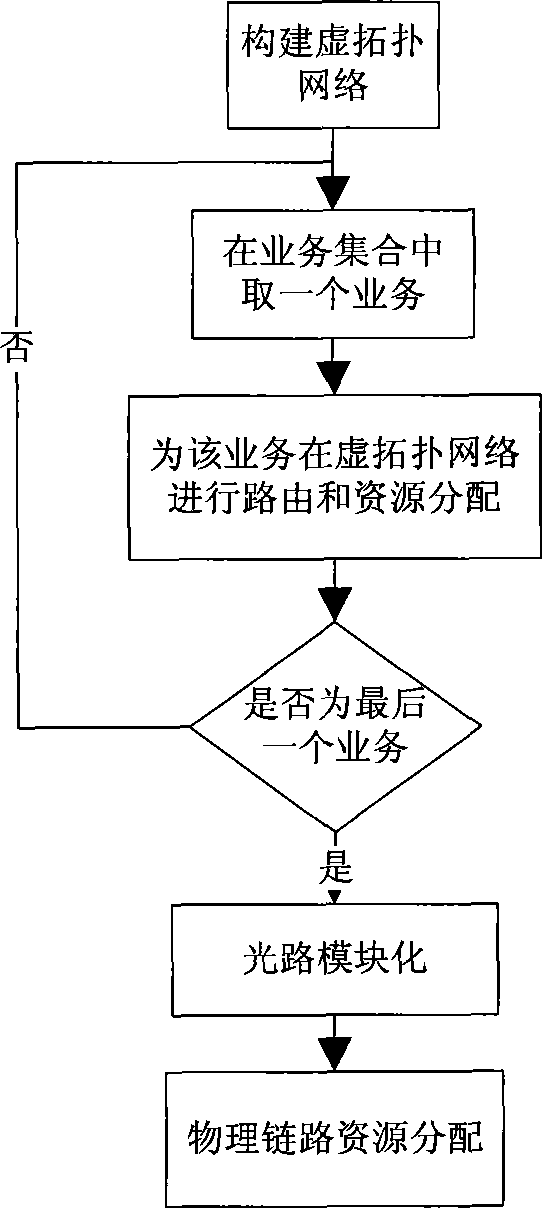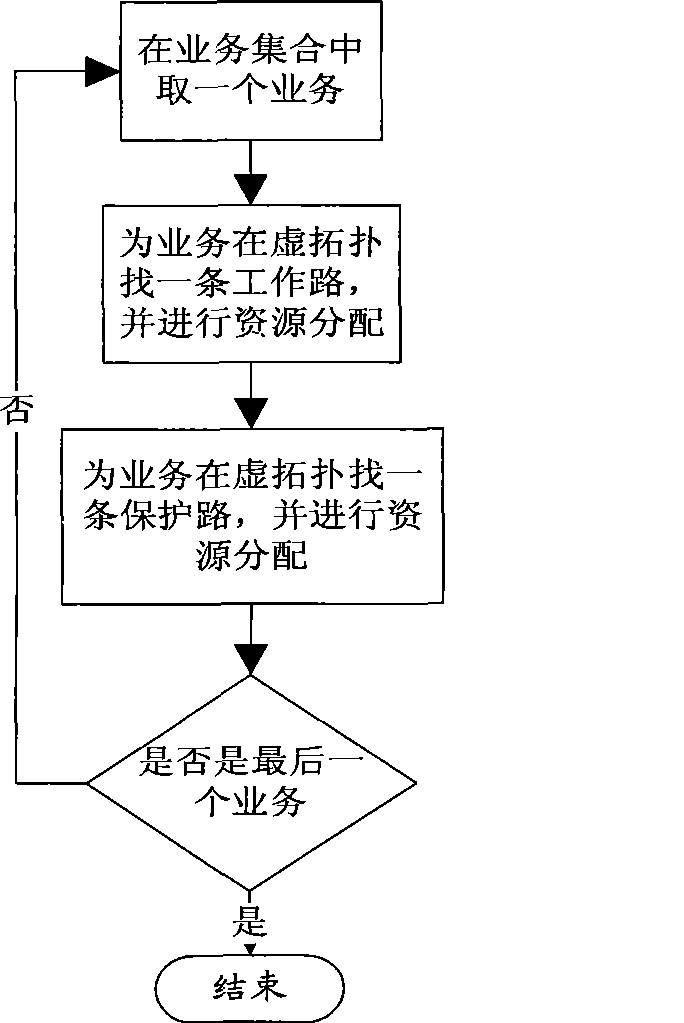Survivable service flow conducting method based on interlayer message routing
A technology with survivability and traffic volume, applied in the field of communication network, it can solve the problems of large resource consumption, increased physical resources, long running time, etc.
- Summary
- Abstract
- Description
- Claims
- Application Information
AI Technical Summary
Problems solved by technology
Method used
Image
Examples
Embodiment Construction
[0079] A simple example is used below to illustrate the technical process of the present invention, mainly describing the link weight setting and resource allocation process when a service searches for a route in the upper layer virtual topology. In the present invention, we assume that the capacity of one wavelength is W=OC-48, and the normalized bandwidth is 48. Assume that there are three types of low-granularity services, OC-1, OC-3, and OC-12, and the normalized bandwidths are 1, 3, and 12 respectively.
[0080] Physical topological network such as Image 6 As shown, it consists of 4 nodes and 5 links.
[0081] The existing 2 services as shown in Table 1 need to be in Image 6 The configuration in the network shown in the figure is aimed at minimizing the finally used physical network resources, that is, minimizing the number of occupied wavelengths on the physical topology network.
[0082] Business Number source node number destination node number bus...
PUM
 Login to View More
Login to View More Abstract
Description
Claims
Application Information
 Login to View More
Login to View More - Generate Ideas
- Intellectual Property
- Life Sciences
- Materials
- Tech Scout
- Unparalleled Data Quality
- Higher Quality Content
- 60% Fewer Hallucinations
Browse by: Latest US Patents, China's latest patents, Technical Efficacy Thesaurus, Application Domain, Technology Topic, Popular Technical Reports.
© 2025 PatSnap. All rights reserved.Legal|Privacy policy|Modern Slavery Act Transparency Statement|Sitemap|About US| Contact US: help@patsnap.com



